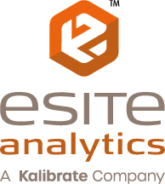Companies’ access to vast stores of customer data, is growing at unprecedented rates. As the volume of classified data grows, so does the potential for data leaks, unauthorized access and even misuse by privileged users.
Even so, one trend we’ve noticed lately, particularly in conversations with companies looking to engage a new predictive analytics strategy, is a general lack of concern over how all that data is protected. Despite high-profile mishaps like one at TD Bank that exposed 260,000 customers’ personal information, many businesses are still not taking the risk seriously. Most don’t think to address the issue of data security upfront unless they’re mandated to stay compliant with auditors or internal security policies.
This is true even after Verizon’s 2012 Data Breach Investigations Report showed that 79% of victims fell prey simply because they were found to possess an often easily exploitable weakness, and that 97% of incidents could have been avoided with simple controls. Perhaps even more alarming is the report’s finding that 94% of compromises in data security weren’t discovered by the companies themselves but rather third parties, often weeks or months after the fact.
Whether it’s sensitive customer information or intellectual property, your data is your lifeline. What would happen to your business if you lost your customer data? If company records were stolen? If your system were to experience significant downtime?
The good news is that most of these risks can be avoided if care is taken on how you expose your network to the outside world. There are a lot of threats, but most of them revolve around not being prepared.
Take some basic steps to ensure your data’s protected, and you may never have cause for concern:
Ask questions
Before hiring a predictive analytics firm, be sure to ask what preparation and planning measures are in place. If you’re already partnered up, now is the time to start asking questions. While there’s no silver bullet, the company safeguarding your data should be constantly monitoring the system and able to articulate what steps are being taken to minimize downtime and secure any potential flaws and vulnerabilities.
Don’t take anything for granted.
Get specifics on how your data is protected. If any of the answers you’re getting are unclear, don’t shy away from probing deeper to get a complete picture of data security policies and procedures.
Request Updates
Security threats are constantly evolving, and so should your safeguards. Behind the scenes, your IT security team should be working feverishly to employ newer and newer technologies and update policies to accommodate an ever-changing environment.
eSite’s data center is secured by a dual two-factor authentication system.
It uses a keycard, pin and biometric scanner system. Downtime is kept to a minimum with two sources of power from two different grids as well as a diesel generator.
Want to know more about eSite’s data security measures? Our technology director will be glad to answer any questions.
